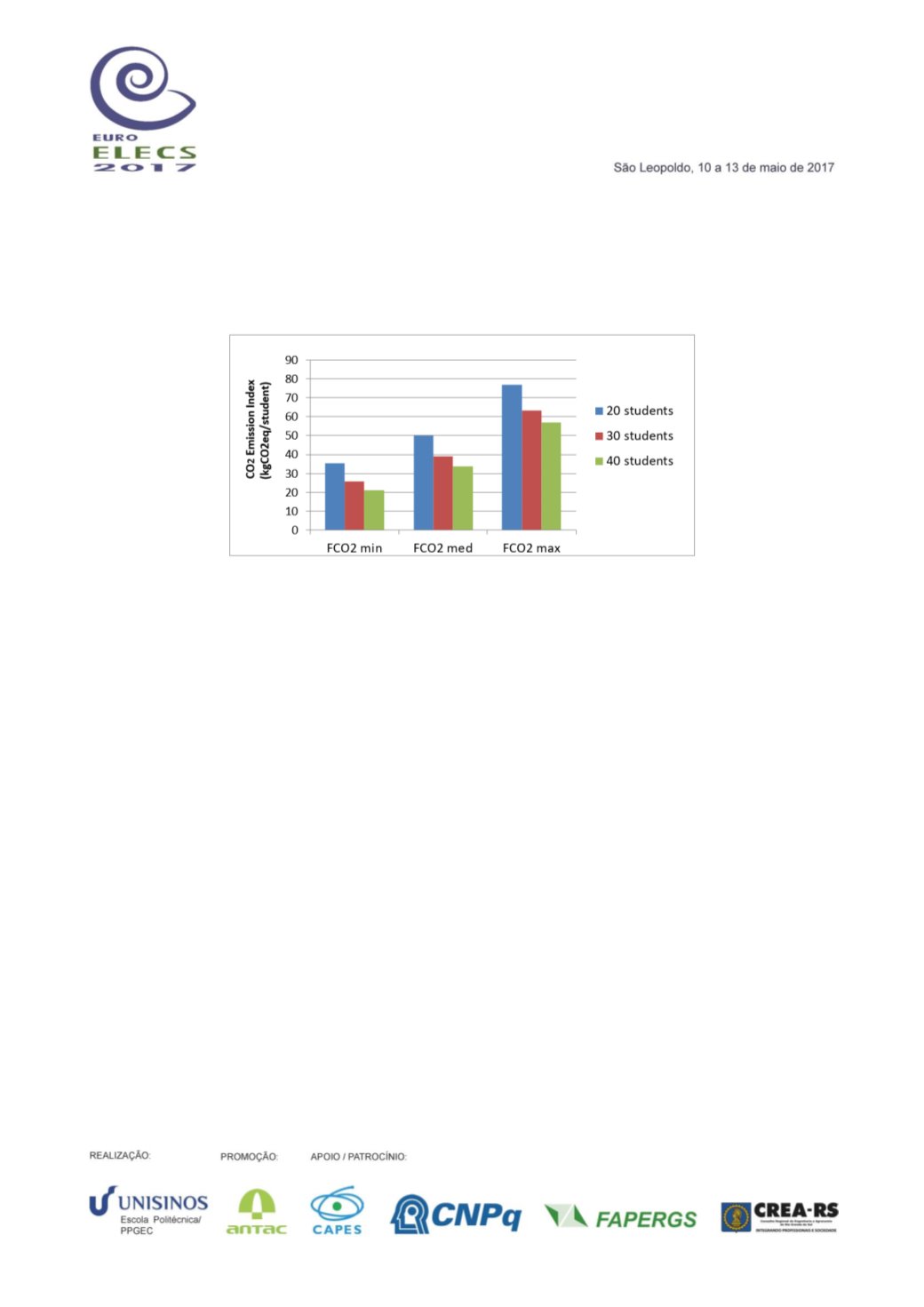

81
study. However, it is important to highlight the future with net zero energy buildings (with renewable
energy production in buildings), which can drastically increase the construction and maintenance
participation in CO
2eq
life cycle due to the operational energy decrease and equipment installation
and replacement, such as photovoltaic panels. These scenarios will be studied in future research.
Finally, the results of CO
2eq
emission index are presented in Figure 7.
Figure 7.
CO
2
emission Index
It is important to account the amount of CO
2eq
emitted by the students in the school. In this sense,
the index was generated, which shows that even though classrooms with a greater occupational
rate, in the end, presented better results, as more students are in the school , it is more efficient to
have 40 students per classroom in terms of space than 20 or 30 students. However, considering
comfort and learning aspects and the impact of better learning conditions for students and
teachers, less students per classroom is a better alternative. Perhaps, the number of 30 students
per classroom could be the optimum occupational rate, with differences in relation to the case of 40
students, ranging from 11% to 22% for FCO
2max
and FCO
2min
scenarios, respectively.
In future studies the optimum relation between the CO
2
emissions with occupational rate (with
users perception surveys), together with a cost assessment, should be evaluated.
4. CONCLUSIONS
The relation between occupation rate and global warming potential was evaluated, by CO
2eq
emissions account in a school building’s life cycle, located in Goiânia. The structure system
presented the greatest participation in the construction phase while the wall system presented the
greatest participation in the maintenance phase. For the total life cycle of a building, the condition
of 20 students per classroom resulted in 282 to 615 tCO
2eq
/school; 30 students per classrooms in
309 to 758 tCO
2eq
/school; and 40 students per classrooms in 338 to 912 tCO
2eq
/school. The
construction phase participation ranged from 13 to 43%, the operational phase from 27 to 77% and
the maintenance from 9 to 30%.
With regards to the CO
2eq
emissions related to the number of students, an index (CO
2eq
emissions
by student) was proposed, which the condition of 40 students per classroom presented the best
results, ranging from 21 to 57 kgCO
2eq
/student.
The results of this study call attention to the choice of CO
2eq
emission electricity factors used for
global warming potential assessments, with differences in results of 270%. For this kind of building


















